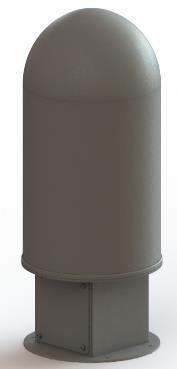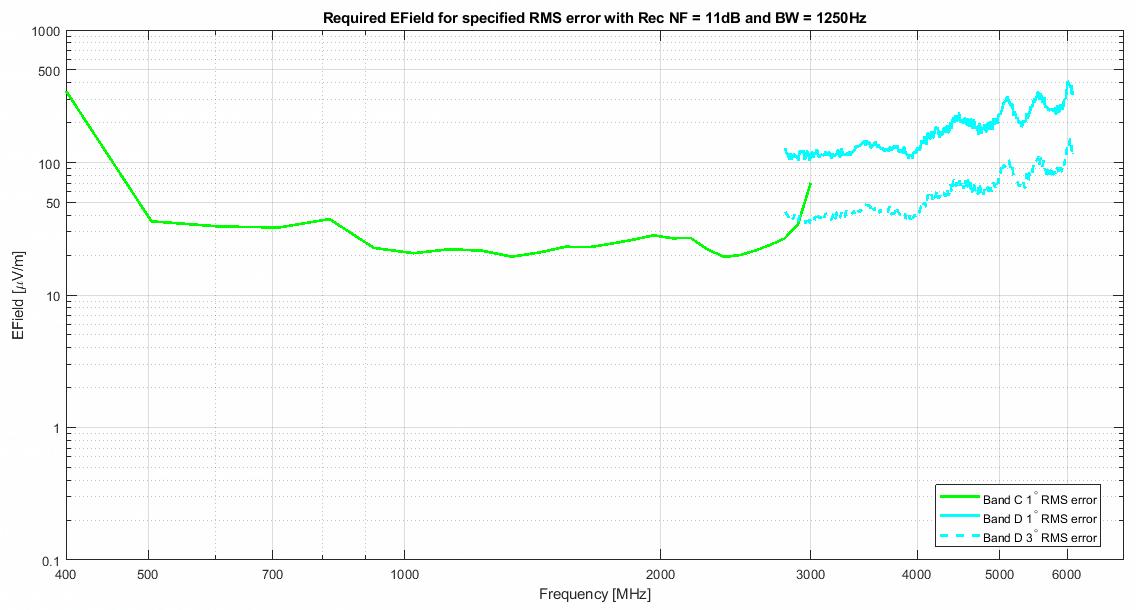

DIRECTION



VERSION: 1.2

FEATURES:
• Highly versatile
• Accurate DF applications
• Vertical polarization
• Rugged construction
APPLICATIONS:
• Mobile and fixed DF applications
• Ideal for C-UAS applications
Compact Dual Band Direction Finding Antenna
400 – 6000 MHz
Product Code: DF-A0121
SPECIFICATIONS:
Electrical:
Frequency range
400 – 6000 MHz
Polarisation Vertical
DF:
DF frequency range
Band C: 400 – 3000 MHz; Band D: 3000 – 6000 MHz
Nominal input impedance 50 Ω
Antenna type
5-element DF array (From 5- to 2-channel receiver compatible)
Strong signal DF accuracy < 1º RMS
Monitoring:
Frequency Range
RF Interface:
400 – 6000 MHz
Connectors 11 x TNC female
Mechanical:
Height
Diameter
Mounting method
720 mm
304 mm
Fixed mounting flange for mast or mobile mounting
Material Aluminium, fibreglass
Weight <12 kg
Environmental: designed to meet the following specifications
Wind survival 160 km/h
Temperature (operational) - 31 ºC to +70 ºC
Water ingress rating IP65
PRODUCT DESCRIPTION:
The DF-A0121 direction finding antenna from Alaris Antennas originates from the well-established DF-A0062 wideband DF antenna. This antenna is the highest-frequency set, which works well from 400 to 6000 MHz. It is suitable for quick deployment as well as fixed applications.
The 5-element DF array is located inside a radome with the electrical connections for the ten channels being available near the base, via the enclosure at the base of the antenna.
The antenna also includes a dedicated Monitoring channel.


Compact Dual Band Direction Finding Antenna
400 – 6000 MHz
Product Code: DF-A0121
DF SENSITIVITY GRAPH:
VERSION: 1.2

The graph illustrates the direction finding sensitivity of a typical system, modelled using a phase and amplitude correlative DF algorithm The sensitivity is measured using an IF bandwidth of 1.25 kHz and without averaging. The graph shows the minimum signal required to obtain a bearing fluctuation of less than 1º for the frequency range 400 to 3000 MHz, less than 3º for the frequency range 3000 to 6000 MHz. The values should be adapted for the system in question if it uses a different bandwidth and receiver noise figure, or if considering a different required accuracy.
INTEROPERABILITY WITH DF RECEIVERS:
The DF sensitivity of the full system is highly dependent on the receivers, processing and algorithm used, as well as the characterization table density. The graph above assumes a 5-channel, low noise receiver and correlative algorithm. The sensitivity will be between 1 and 10 dB worse with a 2-channel receiver system.
Special attention has been paid to the nulls which usually occur in this band due to the large diameter mast. Receiver systems with two channels, commutated to measure five antennas, are sensitive to nulls in the element patterns. Depending on the receiver and algorithm, reducing the null depth leads to a more reliable system.


